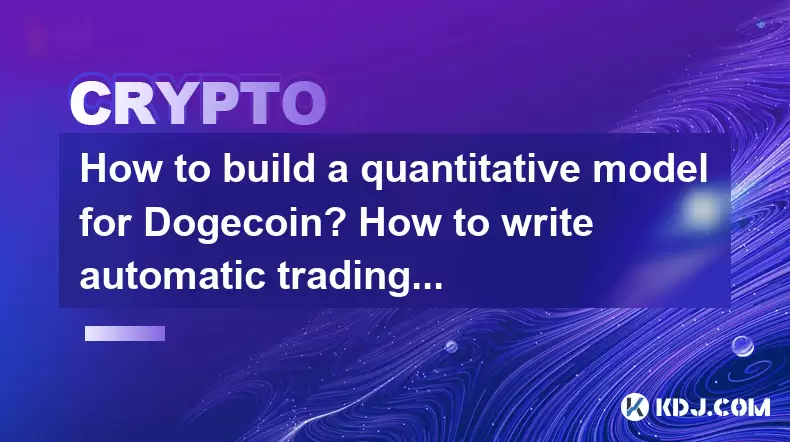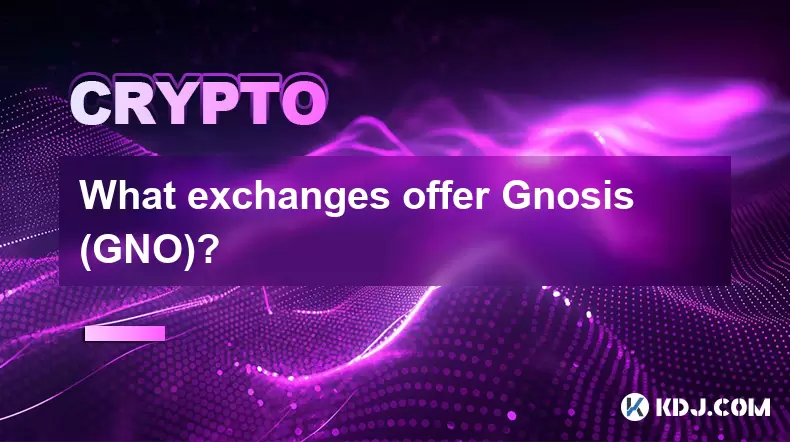-
 Bitcoin
Bitcoin $119000
-2.21% -
 Ethereum
Ethereum $4315
1.01% -
 XRP
XRP $3.151
-3.11% -
 Tether USDt
Tether USDt $0.0000
0.00% -
 BNB
BNB $808.5
-0.71% -
 Solana
Solana $175.8
-4.21% -
 USDC
USDC $0.9999
0.00% -
 Dogecoin
Dogecoin $0.2250
-3.92% -
 TRON
TRON $0.3469
1.77% -
 Cardano
Cardano $0.7818
-3.81% -
 Chainlink
Chainlink $21.47
-2.10% -
 Hyperliquid
Hyperliquid $43.30
-6.81% -
 Stellar
Stellar $0.4370
-2.84% -
 Sui
Sui $3.682
-4.40% -
 Bitcoin Cash
Bitcoin Cash $590.8
2.67% -
 Hedera
Hedera $0.2484
-5.20% -
 Ethena USDe
Ethena USDe $1.001
0.00% -
 Avalanche
Avalanche $23.10
-4.29% -
 Litecoin
Litecoin $119.2
-3.96% -
 Toncoin
Toncoin $3.409
0.90% -
 UNUS SED LEO
UNUS SED LEO $9.016
-1.29% -
 Shiba Inu
Shiba Inu $0.00001304
-3.82% -
 Uniswap
Uniswap $11.18
1.33% -
 Polkadot
Polkadot $3.913
-3.51% -
 Cronos
Cronos $0.1672
-3.08% -
 Dai
Dai $1.000
0.02% -
 Ethena
Ethena $0.7899
-4.70% -
 Bitget Token
Bitget Token $4.400
-1.23% -
 Pepe
Pepe $0.00001132
-5.93% -
 Monero
Monero $257.9
-6.44%
How to build a quantitative model for Bitcoincoin? How to write automatic trading code?
Building a quantitative model for Dogecoin and writing automatic trading code is challenging but rewarding, requiring data analysis, model selection, and risk management.
May 20, 2025 at 07:14 am

Building a quantitative model for Dogecoin and writing automatic trading code can be a challenging yet rewarding endeavor for cryptocurrency enthusiasts. This article will guide you through the process of creating a quantitative model for Dogecoin and then delve into the specifics of writing automatic trading code to execute your model's strategies.
Understanding Dogecoin and Quantitative Models
Dogecoin, initially started as a meme cryptocurrency, has gained significant attention and value over the years. A quantitative model for Dogecoin involves using mathematical and statistical methods to predict its price movements and make trading decisions based on these predictions. The goal is to create a model that can analyze historical and real-time data to generate buy or sell signals.
To start, you need to gather relevant data about Dogecoin. This includes historical price data, trading volume, market sentiment, and any other factors that might influence its price. Platforms like CoinAPI or CryptoCompare can provide the necessary data.
Building the Quantitative Model
The first step in building your quantitative model is to define what you want to predict. For Dogecoin, you might be interested in predicting short-term price movements or long-term trends. Once you have a clear goal, you can start selecting the features that will be used in your model.
Feature Selection: Common features for a cryptocurrency model include moving averages, relative strength index (RSI), and volume. You might also consider sentiment analysis from social media platforms, as Dogecoin is often influenced by online discussions.
Model Selection: There are various models you can use, such as ARIMA for time series forecasting, Random Forests for handling non-linear relationships, or LSTM (Long Short-Term Memory) networks for capturing long-term dependencies in data.
Data Preprocessing: Before feeding the data into your model, you need to preprocess it. This includes normalizing the data, handling missing values, and possibly creating new features through feature engineering.
Training and Testing: Split your data into training and testing sets. Train your model on the training data and then evaluate its performance on the testing data. Metrics like Mean Absolute Error (MAE) or Root Mean Square Error (RMSE) can help you assess how well your model is performing.
Optimization: After initial testing, you might need to tweak your model. This could involve adjusting hyperparameters, trying different features, or even switching to a different model type.
Writing Automatic Trading Code
Once you have a quantitative model that you're satisfied with, the next step is to write automatic trading code to execute trades based on the model's signals. This involves setting up a trading environment and writing scripts that can interact with cryptocurrency exchanges.
Choosing a Trading Platform: You'll need to select a trading platform that supports Dogecoin and offers an API for automated trading. Popular choices include Binance, Coinbase Pro, and Kraken.
Setting Up the Environment: You'll need a programming environment to write your trading code. Python is a popular choice due to its extensive libraries for data analysis and trading, such as pandas, numpy, and ccxt.
Writing the Trading Script: Your trading script will need to do the following:
- Connect to the exchange API.
- Fetch real-time data.
- Use your quantitative model to generate trading signals.
- Execute trades based on those signals.
Here's a basic example of how you might structure your trading script in Python:
import ccxt
import pandas as pd
from your_model import predictInitialize the exchange
exchange = ccxt.binance()
Function to fetch data
def fetch_data(symbol, timeframe):
ohlcv = exchange.fetch_ohlcv(symbol, timeframe)
df = pd.DataFrame(ohlcv, columns=['timestamp', 'open', 'high', 'low', 'close', 'volume'])
df['timestamp'] = pd.to_datetime(df['timestamp'], unit='ms')
return df
Function to execute trades
def execute_trade(symbol, side, amount):
order = exchange.create_market_order(symbol, side, amount)
return order
Main trading loop
while True:
df = fetch_data('DOGE/USDT', '1m')
signal = predict(df)
if signal == 'buy':
execute_trade('DOGE/USDT', 'buy', 100)
elif signal == 'sell':
execute_trade('DOGE/USDT', 'sell', 100)
# Wait for the next candle
time.sleep(60)
Implementing Risk Management
Risk management is crucial when writing automatic trading code. You need to ensure that your trading strategy doesn't expose you to excessive risk. Here are some strategies to consider:
Stop-Loss Orders: Implement stop-loss orders to limit potential losses. For example, if you buy Dogecoin at $0.10, you might set a stop-loss at $0.09.
Position Sizing: Determine how much of your portfolio to allocate to each trade. A common rule is to risk no more than 1-2% of your total capital on any single trade.
Diversification: Don't put all your capital into Dogecoin. Consider trading multiple cryptocurrencies to spread your risk.
Backtesting: Before going live with your trading code, backtest it using historical data to see how it would have performed in the past. This can help you identify potential flaws in your strategy.
Monitoring and Adjusting Your Model
Once your automatic trading code is running, it's important to monitor its performance and make adjustments as necessary. Market conditions can change, and what worked yesterday might not work tomorrow.
Performance Metrics: Track metrics like profit/loss, win rate, and drawdown to evaluate how well your model is performing.
Regular Updates: Update your model regularly with new data and retrain it if necessary. Also, keep an eye on any changes in the cryptocurrency market that might affect Dogecoin's price.
Error Handling: Your trading script should include robust error handling to deal with potential issues like API downtime or unexpected data formats.
Frequently Asked Questions
Q: Can I use the same quantitative model for other cryptocurrencies?
A: While the core principles of building a quantitative model can be applied to other cryptocurrencies, you'll need to adjust the model to account for the unique characteristics of each cryptocurrency. For example, Bitcoin might be influenced by different factors than Dogecoin, so you'd need to select different features and possibly use a different model type.
Q: How much historical data do I need to build an effective quantitative model for Dogecoin?
A: The amount of historical data needed can vary, but a good starting point is at least one year's worth of data. This allows you to capture various market conditions and trends. However, the more data you have, the better your model can generalize to new situations.
Q: Is it legal to use automatic trading bots for cryptocurrency trading?
A: The legality of using automatic trading bots depends on your jurisdiction. In many countries, it is legal as long as you comply with local regulations regarding trading and financial transactions. Always check the laws in your area and ensure that the exchanges you use allow automated trading.
Q: How can I protect my trading bot from being hacked?
A: To protect your trading bot from being hacked, use strong, unique passwords for your exchange accounts and enable two-factor authentication (2FA). Keep your trading code and API keys secure, and consider using a virtual private server (VPS) with robust security measures to run your bot. Regularly update your software and monitor for any suspicious activity.
Disclaimer:info@kdj.com
The information provided is not trading advice. kdj.com does not assume any responsibility for any investments made based on the information provided in this article. Cryptocurrencies are highly volatile and it is highly recommended that you invest with caution after thorough research!
If you believe that the content used on this website infringes your copyright, please contact us immediately (info@kdj.com) and we will delete it promptly.
- PumpFun (PUMP) Price: Riding the Meme Coin Wave or Facing a Wipeout?
- 2025-08-12 16:50:12
- Arctic Pablo Coin: Meme Coin Growth Redefined?
- 2025-08-12 16:50:12
- Ether ETFs Surge: Inflows and Bull Signs Point to $4K ETH?
- 2025-08-12 16:30:12
- Bitcoin, Crypto Market, and CPI Anticipation: A New York Minute on Volatility
- 2025-08-12 16:30:12
- Bitcoin, CPI, and Market Fears: Navigating the Crypto Landscape
- 2025-08-12 15:10:13
- BTC Traders Eye ETH Targets as CPI Looms: A New York Minute
- 2025-08-12 15:10:13
Related knowledge

How to purchase Aragon (ANT)?
Aug 09,2025 at 11:56pm
Understanding Aragon (ANT) and Its PurposeAragon (ANT) is a decentralized governance token that powers the Aragon Network, a platform built on the Eth...

Where to trade Band Protocol (BAND)?
Aug 10,2025 at 11:36pm
Understanding the Role of Private Keys in Cryptocurrency WalletsIn the world of cryptocurrency, a private key is one of the most critical components o...

What is the most secure way to buy Ocean Protocol (OCEAN)?
Aug 10,2025 at 01:01pm
Understanding Ocean Protocol (OCEAN) and Its EcosystemOcean Protocol (OCEAN) is a decentralized data exchange platform built on blockchain technology,...

Where can I buy UMA (UMA)?
Aug 07,2025 at 06:42pm
Understanding UMA and Its Role in Decentralized FinanceUMA (Universal Market Access) is an Ethereum-based decentralized finance (DeFi) protocol design...

What exchanges offer Gnosis (GNO)?
Aug 12,2025 at 12:42pm
Overview of Gnosis (GNO) and Its Role in the Crypto EcosystemGnosis (GNO) is a decentralized prediction market platform built on the Ethereum blockcha...

How to buy Storj (STORJ) tokens?
Aug 09,2025 at 07:28am
Understanding Storj (STORJ) and Its Role in Decentralized StorageStorj is a decentralized cloud storage platform that leverages blockchain technology ...

How to purchase Aragon (ANT)?
Aug 09,2025 at 11:56pm
Understanding Aragon (ANT) and Its PurposeAragon (ANT) is a decentralized governance token that powers the Aragon Network, a platform built on the Eth...

Where to trade Band Protocol (BAND)?
Aug 10,2025 at 11:36pm
Understanding the Role of Private Keys in Cryptocurrency WalletsIn the world of cryptocurrency, a private key is one of the most critical components o...

What is the most secure way to buy Ocean Protocol (OCEAN)?
Aug 10,2025 at 01:01pm
Understanding Ocean Protocol (OCEAN) and Its EcosystemOcean Protocol (OCEAN) is a decentralized data exchange platform built on blockchain technology,...

Where can I buy UMA (UMA)?
Aug 07,2025 at 06:42pm
Understanding UMA and Its Role in Decentralized FinanceUMA (Universal Market Access) is an Ethereum-based decentralized finance (DeFi) protocol design...

What exchanges offer Gnosis (GNO)?
Aug 12,2025 at 12:42pm
Overview of Gnosis (GNO) and Its Role in the Crypto EcosystemGnosis (GNO) is a decentralized prediction market platform built on the Ethereum blockcha...

How to buy Storj (STORJ) tokens?
Aug 09,2025 at 07:28am
Understanding Storj (STORJ) and Its Role in Decentralized StorageStorj is a decentralized cloud storage platform that leverages blockchain technology ...
See all articles

























































































